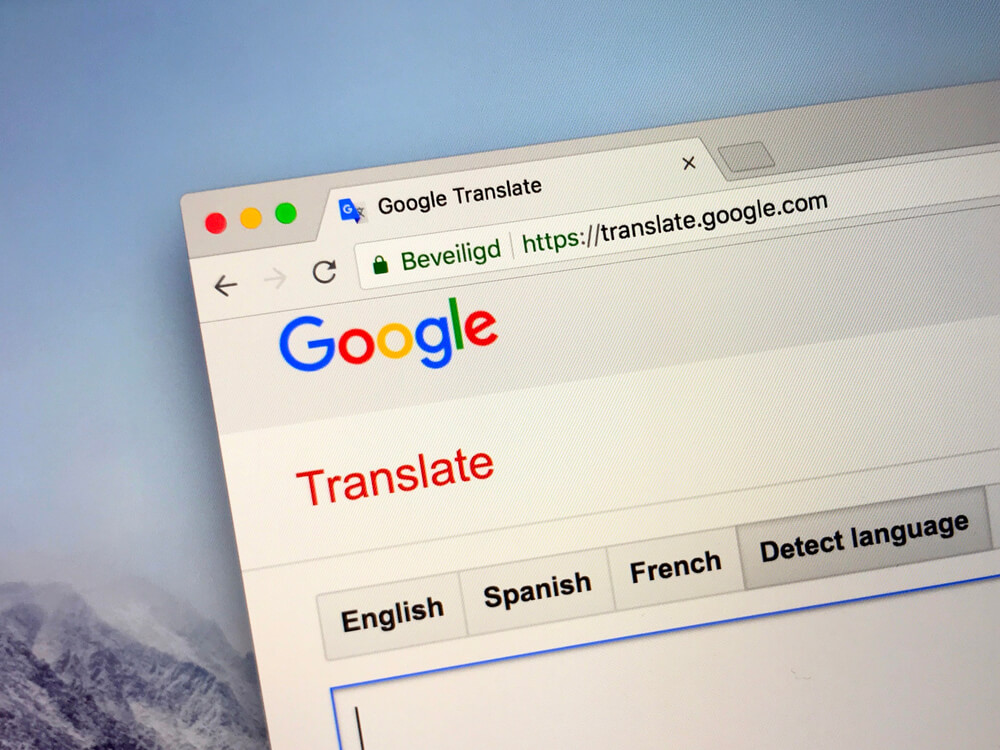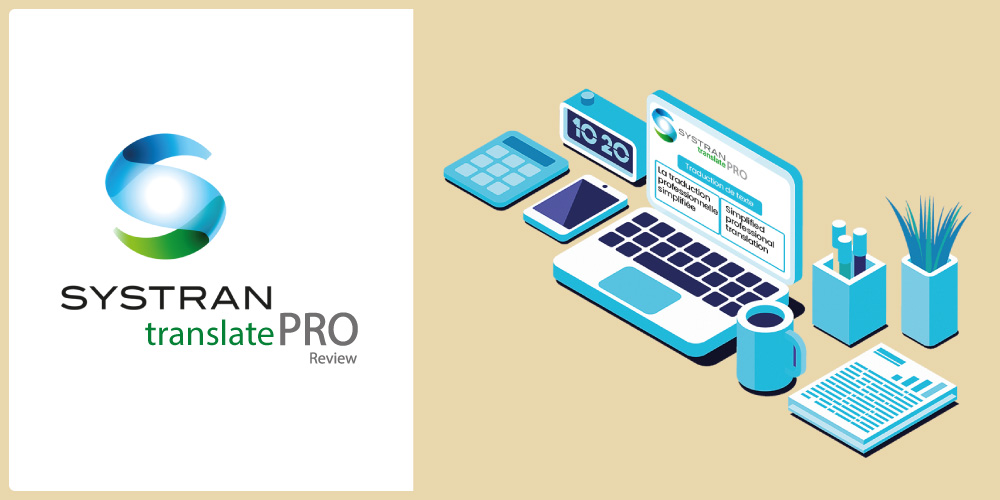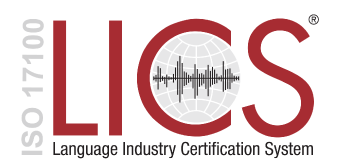When mentioning Machine Translation, a few engines come to mind, mainly Google Translate, Microsoft Translator, or maybe the much talked about newcomer DeepL.
But not many are aware of Amazon Translate the very promising neural machine translation engine. It is especially interesting for bigger companies working in multiple languages and it offers a couple of interesting features that competitors do not have.
As a language service provider, we at EHLION know exactly what to pay attention to, when it comes to high-quality translations, and in today’s article, we will be looking into Amazon Translate – the features it offers, Amazon Translate prices, and when best to use this engine.
What is Amazon Translate?
Amazon Translate is a neural machine translation service – with the keyword here being “neural”. Once upon a time, machine translation often raised a few smiles with its questionable sentence structures or the oddly-turned, fairly funny translations. But that’s all changed now that artificial intelligence has entered the field of machine translation.
Amazon Translate uses “deep learning”, a method of machine learning based on neural networks. Put simply, the architecture of artificial neural networks is inspired by the learning process of the human brain in a natural language processing method that mirrors our own experiences. Just like a real-life human, Amazon Translate is on a constant quest to learn new things, and the result is better and more natural-sounding translations.
Amazon Translate – At a Glance
Amazon Translate is a neural machine translation service. The most important word in this sentence is “neural”. Back in the day the results of machine translation often made us laugh due to a questionable sentence structure or a wrong and completely hilarious translation. Enter artificial intelligence in the field of machine translation and funny translations have started to become a thing of the past!
Amazon Translate uses “deep learning” which is a method of machine learning based on the use of neural networks. Simply put, the architecture of artificial neural networks is inspired by learning like the human brain. So like humans, Amazon Translate can always learn something new. This results in better and more natural-sounding translations.
Features of Amazon Translate
- Automatic language detection: Amazon Translate automatically detects the language used in the source text, without users having to set them manually
- Integration into various applications using APIs by Amazon
- Real-time and batch translations
- Processing various file formats such as Word documents, PowerPoint presentations, and Excel tables
- Custom terminology: Often certain words – such as brand names – cannot or should not be translated. Other times, specific words should always be translated in a certain way align with a company’s brand identity. To achieve this, Amazon Translate allows the user to create custom terminology bases and define how brand names, product names and more are translated.
Supported languages
Amazon Translate supports 71 languages and 4,970 language combinations – an impressive feat, to say the least.
Supported languages include:
- English
- Spanish
- French
- German
- Portuguese
- Chinese (traditional and simplified)
- Farsi
- Russian
- Hindi
- Hebrew
What we found to be quite interesting, is that in contrast to many other machine translation services, Amazon Translate also differentiates between variants of the same language like Spanish from Spain and Spanish from Mexico or French from Canada and French from France. A little surprising though is that on their website, they don’t differentiate between British English and American English.
How can you use Amazon Translate
Amazon Translate is a service that is offered as part of Amazon Web Services (AWS). AWS was founded in 2006 and is a cloud computing provider. In other words, AWS provides IT resources such as servers, storage space, databases, and many other services through its cloud. Companies can rent those services as needed. This makes expensive on-site investments in hardware and software superfluous.
Companies often use AWS to combine different services and tailor them perfectly to the needs of their company. Amazon Translate is one of those AWS services and can be added to the bundle.
To use Amazon Translate one needs to have an AWS account, which can be a disadvantage for anyone who doesn’t want to use AWS. An Amazon Translate demo version is also available.
On their website, Amazon also offers a detailed tutorial on how to create translations with Amazon Translate.
Integrating Amazon Translate into various applications
Amazon provides APIs in various programming languages which allow easy access to Amazon Translate. API stands for “Application Programming Interface”. APIs allow programs to access and communicate with each other.
Amongst others Amazon offers APIs in the following programming languages:
- Java
- JavaScript
- PHP
- .NET
- Ruby
- Python
Application possibilities
The application possibilities for machine translation are endless, but just because they can be used in many areas, it doesn’t necessarily mean that they should. In the below section we will reveal in which areas you can best benefit from using Amazon Translate and when it’s best not to!
Thanks to artificial intelligence, machine translations get better and better, which is great on the one hand, but on the other, it may cause problems many users aren’t aware of. Why?
Back in the day when machine learning wasn’t a thing, it was easier for users of machine translation to spot a bad translation. The sentences sounded choppy, the content didn’t always make sense and it was more than obvious that the translation couldn’t be used in a professional context. Simply put, users knew that there was no way around hiring a professional translator.
Toda’s outlook is different. Machine translations tend to sound more fluent and are easy to understand. Because the translation sounds good, many users automatically consider it a high-quality translation free from errors. This makes it tempting to simply press copy and paste and use the translation for websites, online shops, or product descriptions rather than hiring and spending money on professional human translators.
But what users should keep in mind is that just because a translation sounds good and machine translation is improving, it doesn’t mean that the translation is error-free. There are still many reasons, why in a professional context, human translators cannot be replaced by machines:
Examples where machine translation fails:
Translating advertisement texts, slogans, word plays, or recognizing irony and humor is something that pushes machine translation to its limits. Sometimes it is not enough to only translate specific content, but also to adapt it to the culture and habits of the target audience through localisation, which is something machine translation cannot do. An anecdote that makes everyone in the UK laugh, might not work in Japan, because the cultural context is missing. In these cases, a professional translator with in-depth knowledge of both languages and cultures is needed to make sure that your message comes across the right way.
In the end, one should keep in mind that having a website with translation errors and incorrect use of terminology, will cost you more than you would have ever spent on a professional human translator.
How to benefit from Amazon Translate
While often there is no way around hiring a professional translator there is especially one area where Amazon translate has an advantage: real-time translation.
Translating content into multiple languages in real-time is something that cannot be done or is very difficult to do for human translators.
Another area where one might benefit from Amazon Translate is when translated content is primarily used for internal analysis within the company. Let’s have a look at some examples:
- Analysis of your company’s social media channels. Big companies have social media channels in multiple languages, with Amazon Translate you can monitor all those channels without a language barrier. No matter if it’s feed stories or comments, the service translates the content into the language of the user.
- Customer support via live chat or email. Amazon Translate can be integrated into various applications, allowing the user to translate the content instantly. This isn’t only useful for the already mentioned feed stories, but it can also speed up communication with customer support.
Oftentimes helpdesks and live chats are available in English 24/7, while other languages are either not supported at all or only at certain times. With Amazon Translate customer requests in multiple languages can be answered, even if both parties don’t speak the same language. By using Amazon Translate, customer requests can be answered faster and efficiently.
One should keep in mind though that the more complex the topic, the more likely it is that something gets lost in translation. So Amazon Translate might enhance the customer support for some companies, whilst not being the best solution for others.
To sum everything up, you can benefit from Amazon translate whenever real-time translation is required, either for analysis or communication. The application possibilities as well as the fact that Amazon Translate is a part of AWS indicates which target group the service aims to attract. The focus of attention is on companies that work with many different languages daily. For example, Amazon Translate might be able to improve and speed up the workflow in a team that regularly works with multilingual content and data.
Amazon Translate – Pricing
Most machine translation services are either completely free or offer a free basic version and a premium version which you pay for via a monthly subscription. Amazon Translate, however, choose a different path: the customer pays per character.
1 million characters cost 15 USD.
However, after creating your first translation request, 2 million characters per month will be added to your account for free, for 12 months.
Amazon Translate review – Advantages and disadvantages
Advantages
Text quality
Thanks to deep learning and artificial intelligence, neural machine translators like Amazon Translate deliver increasingly precise and more natural-sounding translations. At the same time, the machine’s AI is constantly being fed new knowledge and hence, improving greatly its translations.
However, an increase in quality doesn’t mean that from now on human translators won’t be needed anymore.
Whether you are after the translation of manuals or patent translation, there are still countless areas, where human translators are irreplaceable. Even when machine translation is used to generate a higher output in a shorter time, anyone who wants high-quality content will need a human translator for machine translation post-editing. In the MT post-editing process, the translation is edited by a human translator to make sure it matches human standards.
supported languages & automatic language detection
With 71 languages, 4970 language combinations, and even variants of the same language, Amazon Translate is a powerful machine translation service. And even better, users don’t even have to set the source language of the text as Amazon Translate detects it automatically for them.
Easy integration
Thanks to the APIs available in various programming languages, integrating Amazon Translate into different applications is child’s play.
Disadvantages
AWS
Amazon Translate can only be used with an AWS account which might discourage potential customers from using this service if they are not interested in other AWS services.
Confidentiality
Although cloud solutions offer countless advantages, users might be concerned about transferring sensitive and confidential content to external servers.
Low-quality translation
Amazon advertises its service as being much cheaper than professional human translators. That might be true, however, the costs for losing potential and actual clients due to a low-quality translation might be much higher. Therefore, it is important to consider in advance in which context you need a translation and if Amazon Translate or a professional human translator would be the best fit for this job.
If high-quality translations are important to you and you decide that you want to work with human translators then our project managers at EHLION assist you! We will help you with all your questions and translation requests.
At EHLION we only work with native speakers and offer language services in more than 100 languages. Furthermore, we work with translators, who are experts in many different industries, from medical technology, IT and software to gaming.


















